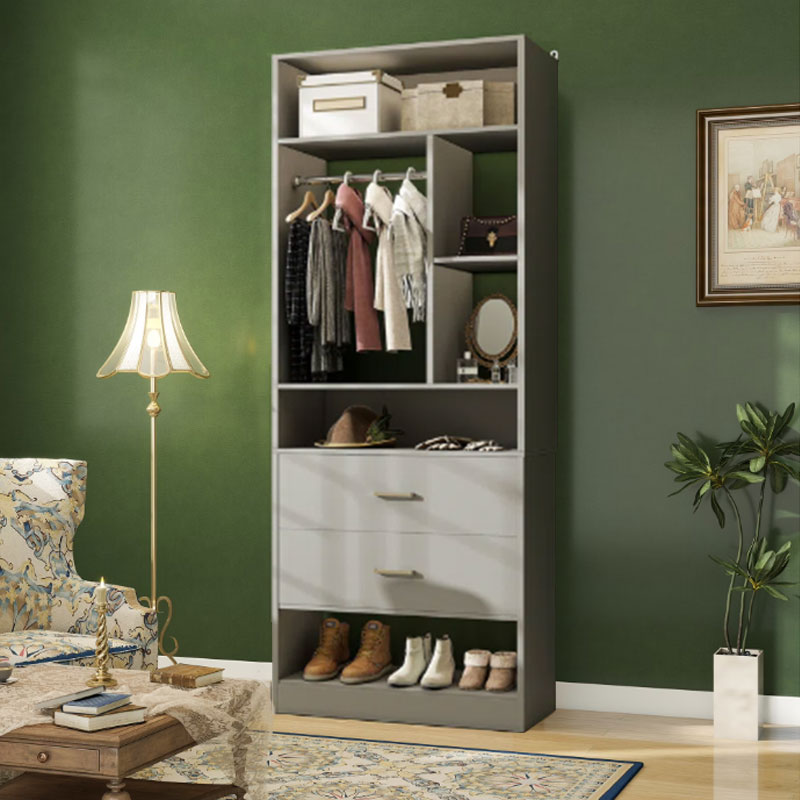Which Colour Is Best for Bedroom Wardrobe
As a manufacturer of Bedroom Wardrobes, we understand that selecting the right colour is a critical decision that impacts aesthetics, functionality, and the overall ambiance of the bedroom. The choice of wardrobe colour should align with practical considerations, design principles, and personal preferences. This article provides a professional analysis to guide your selection process.
Key Factors Influencing Wardrobe Colour Selection
1. Room Size and Lighting
Small Rooms: Lighter colours (e.g., white, light grey, beige) reflect light, creating an illusion of space and airiness. They are ideal for rooms with limited natural light.
Large Rooms: Darker colours (e.g., charcoal, navy, deep wood tones) can add warmth and cohesion to spacious areas, preventing the room from feeling cavernous.
Lighting Conditions: North-facing rooms (cooler light) benefit from warm tones (e.g., cream, light oak), while south-facing rooms (warmer light) pair well with cooler shades (e.g., grey, white).
2. Design Style and Trends
Modern/Minimalist: Neutral palettes (white, grey, black) dominate, offering a clean, timeless look.
Traditional/Classic: Rich wood finishes (walnut, cherry, mahogany) or muted colours (e.g., olive green, navy) add elegance.
Scandinavian: Light woods (oak, birch) and pastel shades (e.g., light blue, soft green) enhance simplicity and functionality.
3. Practicality and Maintenance
Light Colours: Disguise dust less effectively but show stains or scratches more noticeably.
Dark Colours: Conceal wear and stains better but may highlight dust or lint.
Textured Finishes (e.g., matte, wood grain): Camouflage imperfections more effectively than glossy surfaces.
4. Psychological Impact
Colours influence mood and perception:
Whites and Neutrals: Promote calmness and versatility.
Blues and Greens: Evoke tranquility and are suited for bedrooms.
Bold Colours (e.g., navy, emerald): Create focal points but require careful pairing with walls and decor.
Professional Colour Recommendations
1. White and Off-White
Advantages: Maximizes light reflection, pairs with any decor, and creates a sense of cleanliness. Ideal for small or dimly lit rooms.
Considerations: Requires regular cleaning to maintain appearance.
Best For: Modern, Scandinavian, or minimalist bedrooms.
2. Grey (Light to Medium)
Advantages: Offers a neutral yet sophisticated backdrop, balances light and dark elements, and complements most wall colours.
Considerations: Choose undertones (warm or cool) to match existing furniture.
Best For: Urban, industrial, or contemporary styles.
3. Wood Tones (Natural or Stained)
Advantages: Provides warmth and texture; lighter woods (oak, maple) enlarge spaces, while darker woods (walnut, mahogany) add luxury.
Considerations: Ensure wood tone coordinates with other furniture (e.g., Bed Frame, Nightstands).
Best For: Traditional, rustic, or transitional bedrooms.
4. Dark Colours (Navy, Charcoal, Black)
Advantages: Adds depth and drama, conceals wear, and creates a striking contrast in well-lit rooms.
Considerations: Can make small rooms feel cramped; pair with light walls or accents.
Best For: Large bedrooms or bold, modern designs.
5. Soft Pastels (Light Blue, Green, Beige)
Advantages: Introduces subtle colour without overwhelming the space; promotes relaxation.
Considerations: May lack versatility if decor changes frequently.
Best For: Coastal, cottage, or serene-themed bedrooms.
How to Integrate Wardrobe Colour with Your Bedroom
1. Match or Complement Walls
For a cohesive look, select a wardrobe colour that matches the wall shade or contrasts subtly (e.g., light grey wardrobe with white walls).
Avoid clashing undertones (e.g., warm beige wardrobe with cool grey walls).
2. Coordinate with Other Furniture
Ensure the wardrobe colour harmonizes with the bed frame, nightstands, and dressers.
Use a consistent material or colour palette for a unified appearance.
3. Accent and Balance
Use bold wardrobe colours as accent pieces in neutral rooms.
Balance dark wardrobes with light flooring or bedding.
Conclusion
The best colour for a bedroom wardrobe depends on room size, lighting, design style, and practical needs. Neutral shades (white, grey, beige) and natural wood tones remain the most versatile and widely recommended choices for their ability to adapt to various environments and trends. Darker colours and pastels offer specialized solutions for specific design goals. As manufacturers, we prioritize colours that blend durability with aesthetic appeal, ensuring your wardrobe enhances both the functionality and visual harmony of your bedroom. Explore our collection to find colours engineered to meet these standards.


